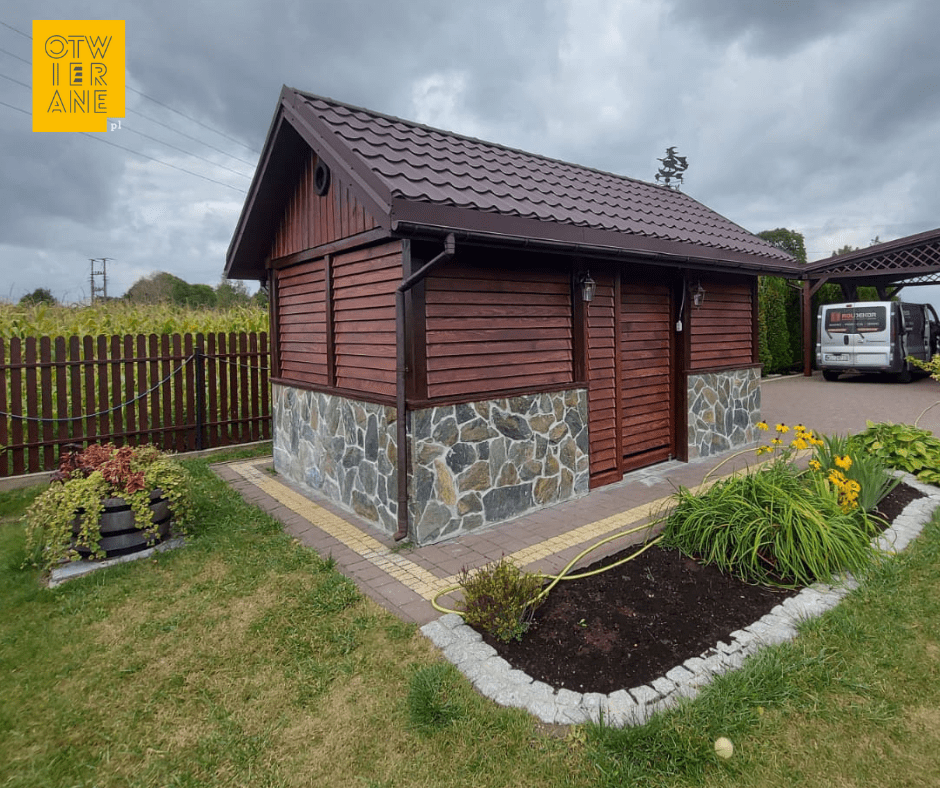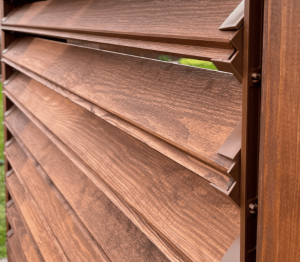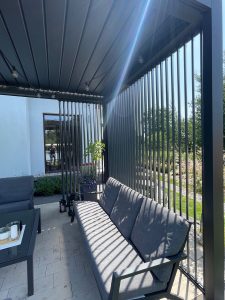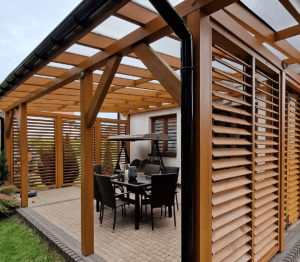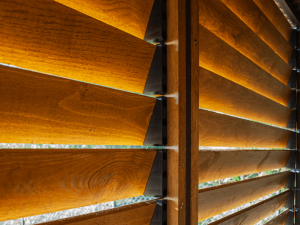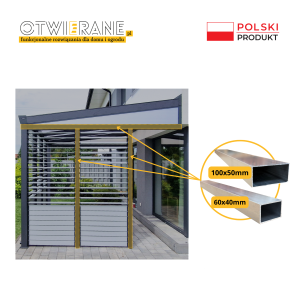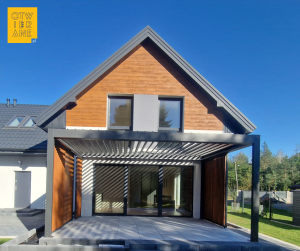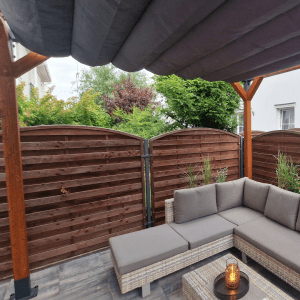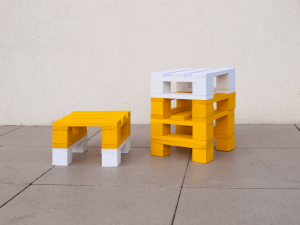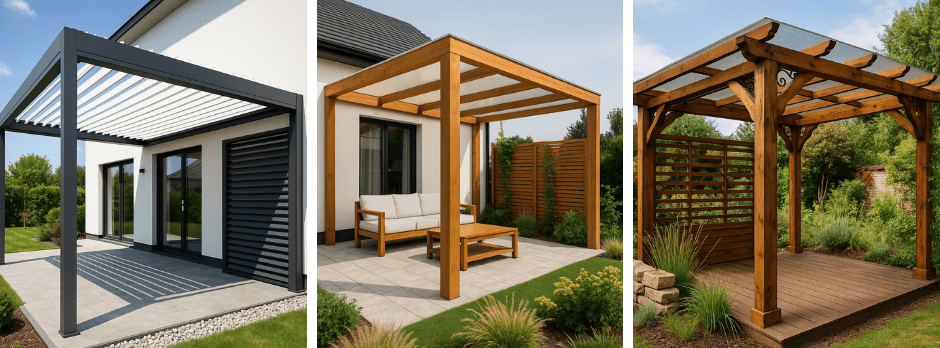
Pergola style - modern, classic or rustic? How to match your pergola to your garden and home
In this article, we look at three of the most popular pergola styles: modern, classic and rustic. Read choose the mood for your garden and terrace.
Wondering which pergola is best suited to your garden or terrace? Choosing a style is more than deciding on the look of the structure. The style of a pergola is a combination of form, proportion, detail and function that together form a coherent whole. In this article, we look at three stylistic approaches: modern, classic (in the traditional sense) and rustic. We describe how each fits into the space, what cultural inspirations it brings and what kind of atmosphere it helps to create. Find out how they differ and how to consciously select a pergola to suit the architecture of your home and the character of your garden.

Why match the style of the pergola to the terrace?
A pergola in a given style is not just a choice of material, but an overall approach to form, colour and function. The style of a pergola is defined by how it looks, how it fits into the space and the impression it creates. Modern relies on simplicity and technology, classic draws on tradition and symmetry, and rustic refers to nature and a rural atmosphere. Style is about form, but also about the atmosphere you create on the terrace.
The style of the pergola influences the perception of the entire terrace area. It can create an impression of modern elegance, traditional solidity or an idyllic garden atmosphere. A well-designed and stylistically matched pergola makes the terrace an integral part of the house, rather than an accidental extension. This is not only aesthetically important, but also practical - different pergola styles respond to different functional needs, use of the space and householders' preferences.
The modern pergola - functionality and minimalism
The modern pergola is a structure with straight lines, made of aluminium, usually in shades of white, anthracite or graphite. Its main feature is its movable louvres, which regulate the light and air supply, ensuring a high level of comfort whatever the weather.
Modern style is not just about technology and aluminium. Contemporary pergolas draw aesthetically on the legacy of the modernism, whose main principle was: form follows function (form follows function). The architecture of the Bauhaus and Le Corbusier already featured simple volumes, a lack of ornamentation, large glazed areas and the dominance of white and grey - all of which are recurrent in the design of modern houses and gardens today.
In this context, a modern pergola with movable slats not only fulfils the function of protection, but also becomes a an aesthetic extension of modernist logicwhere technology is integrated into a coherent architectural language. An example of a project in this vein is the aluminium pergola with slats in Wyszogródwhere the contrast of white lamellas and graphite construction was used, complemented by sliding vertical blinds.
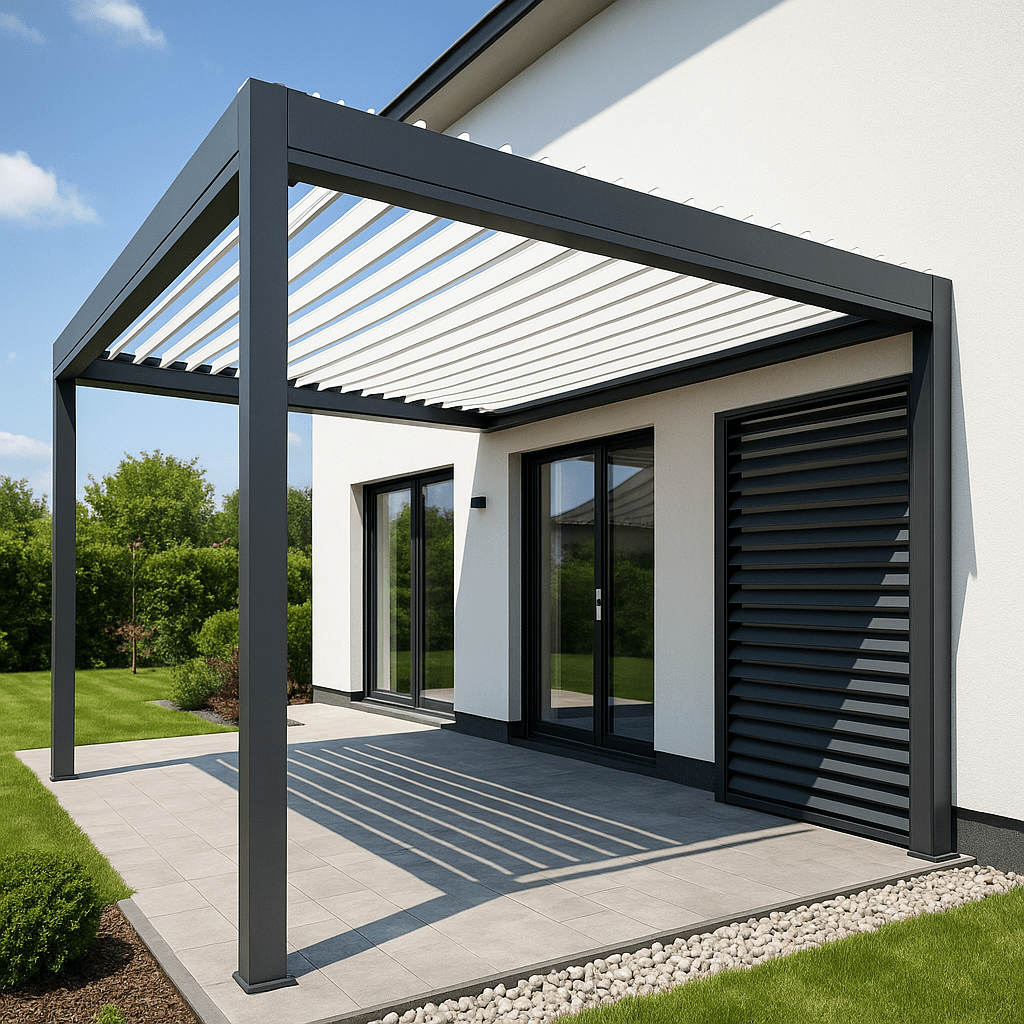
The classic pergola - the timeless beauty of wood
The classic pergola, on the other hand, is usually a wooden structure, roofed with polycarbonate. More traditional: tiles or asphalt shingles. The skeleton of the pergola consists of rectangular posts.
Classic style is associated with architectural orders derived from antiquity: columns, symmetry, rhythm and calmness of forms. In the case of pergolas, we are often dealing with simplified versions of these ideas - a symmetrical structure, a repetitive rhythm of columns, an orderly arrangement of beams. It is worth noting that this is not 'classicism' in the strict sense, but rather 'classical elegance', that is, a reference to traditional, ordered architectural form. A good example a pergola on a terrace in a cluster style (in the traditional sense) is Our implementation in Lesznowola,. The classic style is timeless and elegant. It suits houses with a traditional form perfectly.
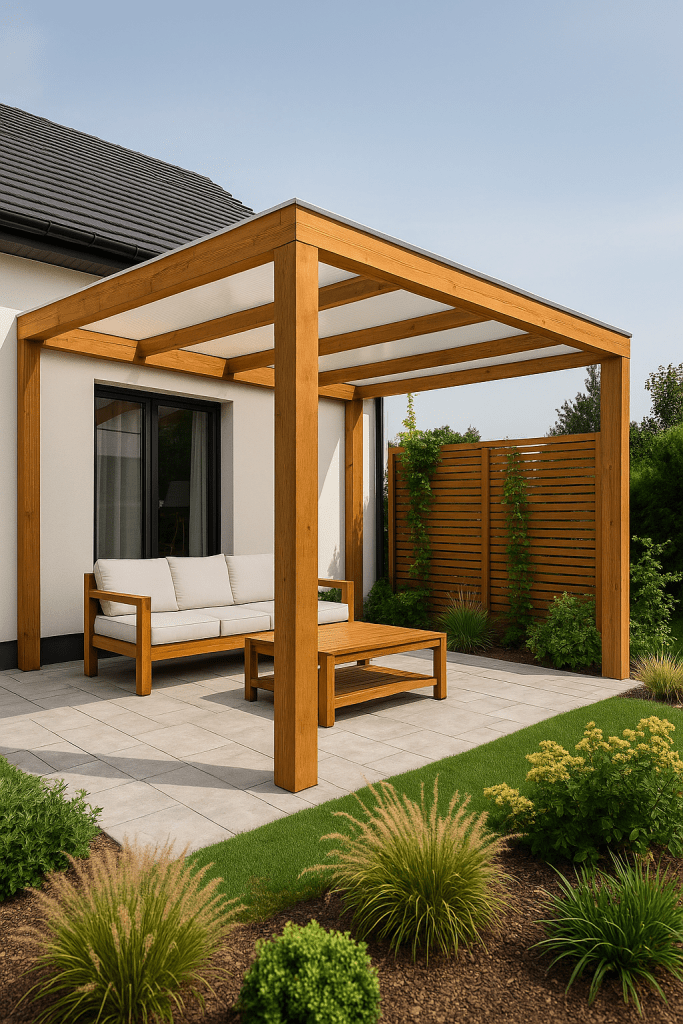
Rustic pergola - naturalness and an idyllic garden character
The rustic style is an aesthetic that is more refined in its simplicity. It is associated with natural wood, visible grain structure, warm browns and structures that are reminiscent of traditional country houses. Inspiration can be found in the architecture of southern France, Provençal residences and Tuscan courtyards, where wood, stone and lush vegetation create an atmosphere of authentic contact with nature. You will recognise the style by the carved elements, decorative trellises or arches that give the space a handcrafted and historic feel.
A rustic style pergola blends well with naturalistic, country gardens, with elements of stone, brick and free-ranging vegetation. Although we do not currently offer a ready-made model of a rustic pergola, this style can be reproduced by the appropriate choice of wood colour, texture and construction details. It is possible to individually order a timber pergola stylistically suited to such spaces, based on classic solutions.
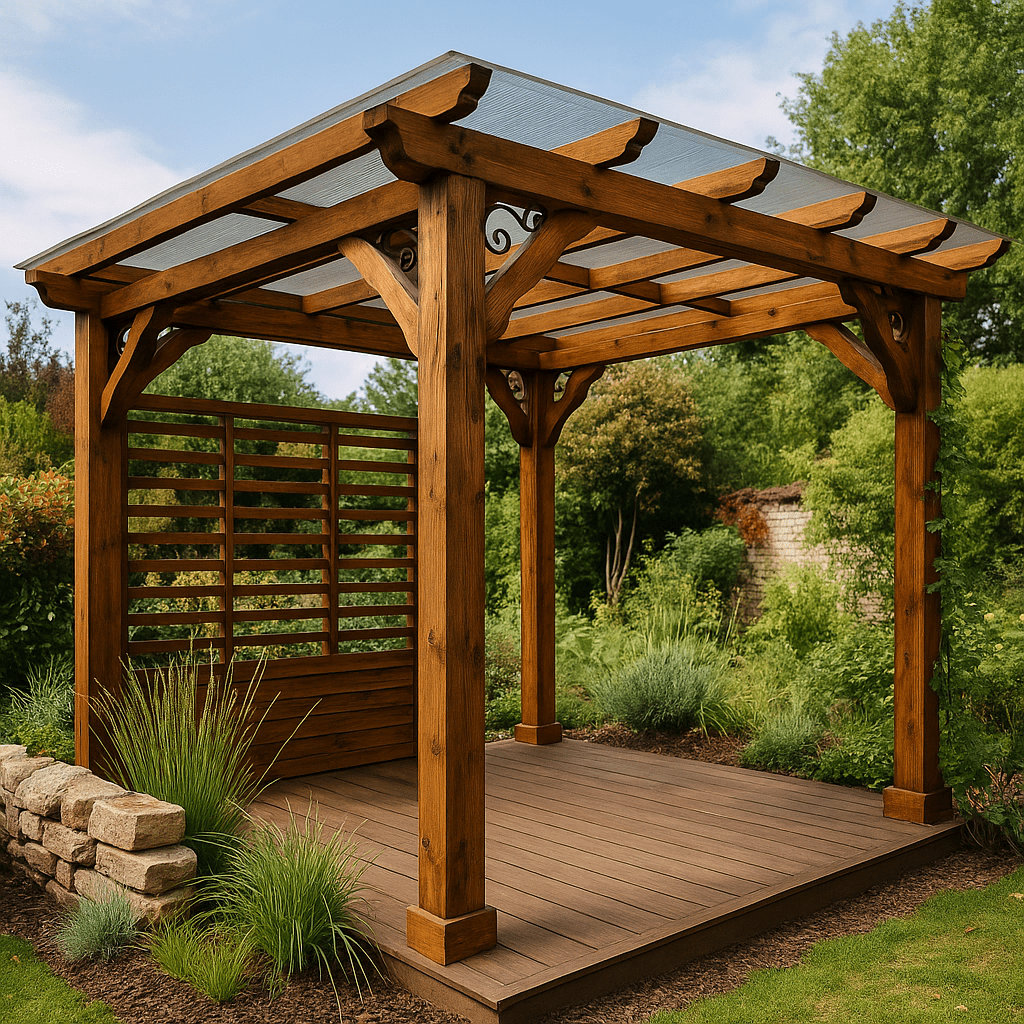
How do you fit a pergola into a space? Key questions
When choosing a pergola style, it is worth answering some basic questions. Is the terrace space modern or traditional in character? What colours dominate the building façade? Is the garden formal and structured, or is it casual and naturalistic? What is the function of the pergola - is it primarily to protect from the sun or to be a decorative extension of the living room? Do you want low-maintenance materials or do you accept the care of wood to maintain its appearance?
Checklist of pergola styles
To make the decision easier, we have prepared a short checklist:
- Modern pergola: choose if your house has a modern body, the predominant colours are white, graphite or anthracite, you care about technology and lack of maintenance.
- Classic pergola: will work well on a house with a classic roof, a façade in light tones and a garden combining plants with natural wood.
- Rustic pergola: consider if your garden is inspired by nature, dominated by warm colours and materials such as brick, stone and raw wood.
Summary and contact
Remember, the style of the pergola doesn't have to be limiting - it's a starting point for creating a cohesive, functional and aesthetically pleasing space. If you are unsure which option will work best with your surroundings, you can contact us. We can help you choose the right solution, based on ready-made models, or prepare a customised pergola.
Contact: +48 530 336 595 Mail: wycena@otwierane.pl Page: www.otwierane.pl

